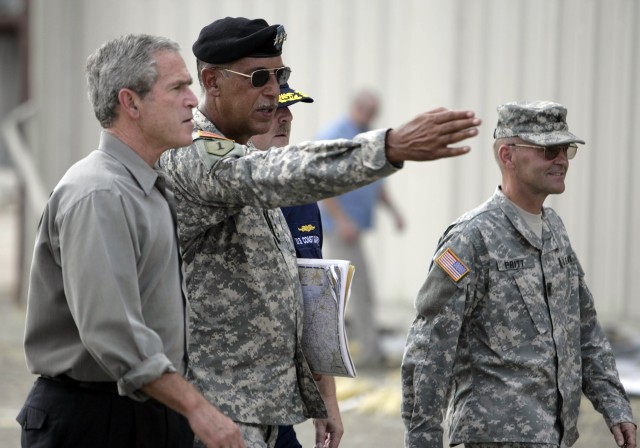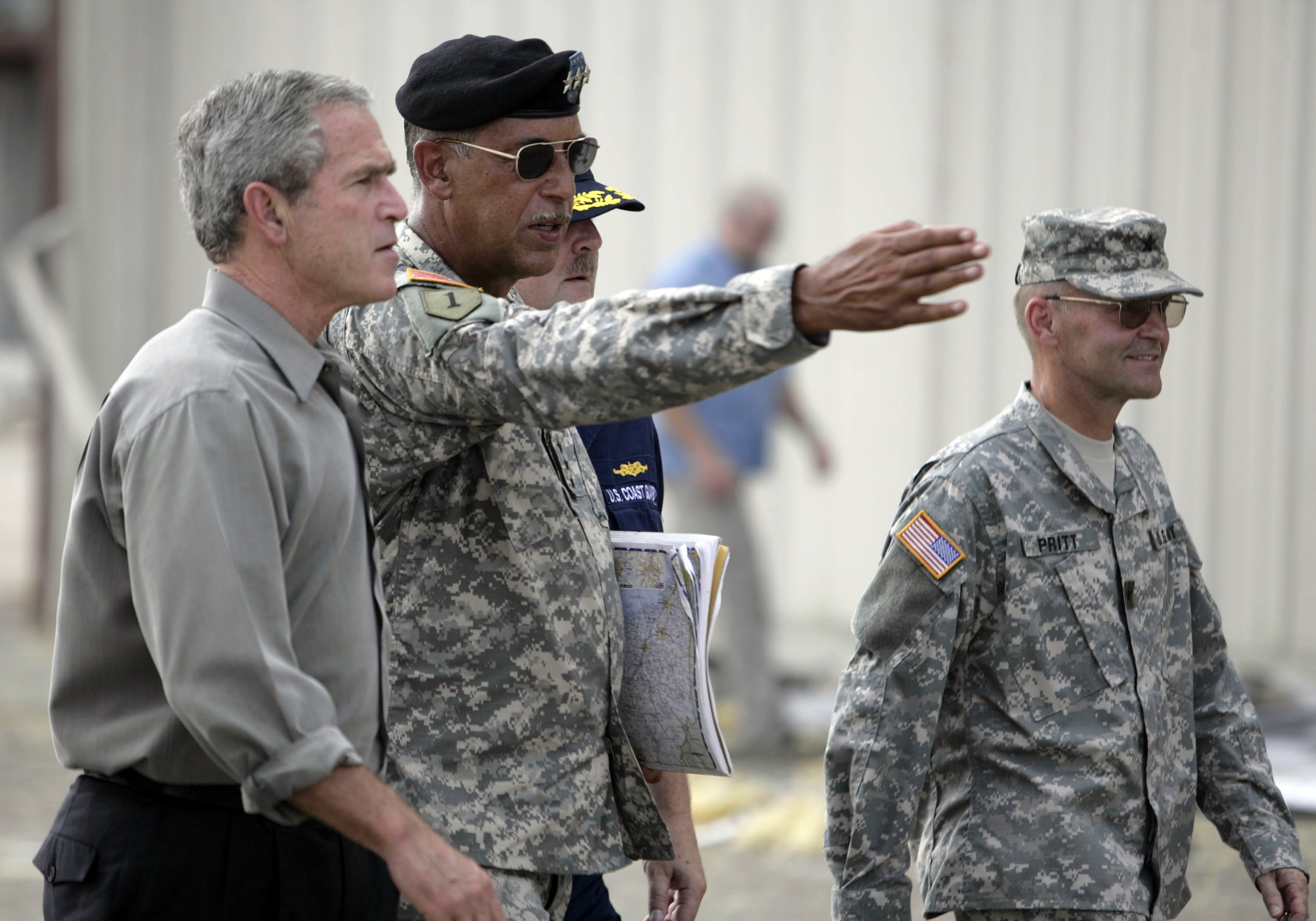FORT MCPHERSON, Ga. (Army News Service, Jan. 8, 2008) - Lt. Gen. Russell L. HonorAfA, commander of First Army, is retiring from the Army and will relinquish his command Jan. 11 in a ceremony at Fort McPherson in Atlanta, Ga.
Best known for commanding Army forces during Hurricane Katrina relief efforts in 2005, Lt. Gen. HonorAfA is writing a book and wants to start a national conversation about emergency preparedness. He envisions a type of "Marshall Plan" to help Americans sustain themselves and their families during times of natural or man-made disasters.
Maj. Gen. (promotable) Thomas G. Miller from U.S. Army Forces Command, G 3/5/7, will replace him as First Army's commander. He will be promoted to lieutenant general during the ceremony.
"Take care of our Army and be proud of that big 'A' you wear," Lt. Gen. HonorAfA said in a brief farewell speech to his staff. "First Army's legacy of training National Guard and Reserve Soldiers goes back to World War I. First Army was first on the beaches of Normandy, first into Paris, first to cross the Siegfried Line, first to cross the Rhine and first to meet the Russians.
"First Army is the Army of champions! Keep being champions for our citizen-Soldiers."
As the Army Guard and Reserve transitioned from a strategic reserve to an operational force in the war on terrorism, Lt. Gen. HonorAfA found that citizen-Soldiers needed to train as they would fight, and changed the training paradigm for reserve-component Soldiers.
Under theater-immersion training, Soldiers go directly from their home station to a forward operating base where they encounter every imaginable in-theater situation: convoy operations; entry control points; improvised explosive devices; 24-hour operations to immerse them in their theaters of operations and civilians on the battlefield who role play everything from insurgents to local elders to sick, pregnant women.
Lt. Gen. HonorAfA implemented Operation Warrior Trainer, which offers combat veterans the opportunity to come home, remain on active duty and train Soldiers preparing to deploy. To date, more than 6,000 Soldiers have shared their knowledge and experiences with fellow warriors through the program.
In coordination with U.S. Army Forces Command, the U.S. Army Reserve Command and the National Guard Bureau, Lt. Gen. HonorAfA also led First Army in creating a pre-mobilization training plan for training received at the home station, such as weapons qualification, land navigation, combat lifesaver and medical screening. When a unit reports to the mobilization training center, they can focus on higher-level collective training and Army Training and Evaluation Program exercises that test and validate a unit's readiness for deployment.
No amount of training, however, could have fully prepared Lt. Gen. HonorAfA or First Army for Hurricane Katrina, which devastated the Gulf Coast on Aug. 29, 2005.
Until Jan. 15, 2006, First Army was responsible not only for training, but providing Defense Department support to civilian authorities during disasters, and with the winds of Katrina still blowing, Lt. Gen. HonorAfA and the First Army team were headed to Mississippi to establish Joint Task Force-Katrina.
"The storm won the first quarter...It was a perfectly executed attack, if you think of it in military terms," Lt. Gen. HonorAfA said at the time. "Communications out, travel modes cut, no electricity, no water...it was a bad situation."
By Aug. 31, National Guard, Coast Guard and Navy helicopters were performing thousands of search-and-rescue missions. Lt. Gen. HonorAfA's task force was in New Orleans delivering water and tens-of-thousands of meals ready to eat to storm victims, and by Sept. 2, JTF-K had evacuated the people from the Superdome and Convention Center.
During the initial crisis, Lt. Gen. HonorAfA began formulating his idea of "a culture of preparedness," as a response to a lack of communication between and among first responders. Main supplies of power were cut, most generators used for backup power were under water and all communications had been destroyed.
Lt. Gen. HonorAfA immediately understood the fixes needed, including getting generators off the ground floor to avoid flooding, ensuring local pharmacies and gas stations have generators, putting communications signals on top of buildings and coordinating with churches and schools so they will be neighborhood disaster relief centers.
(Phil Manson serves with the First Army Public Affairs Office.)


Social Sharing